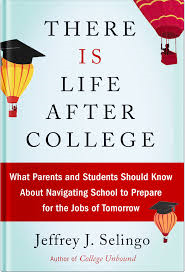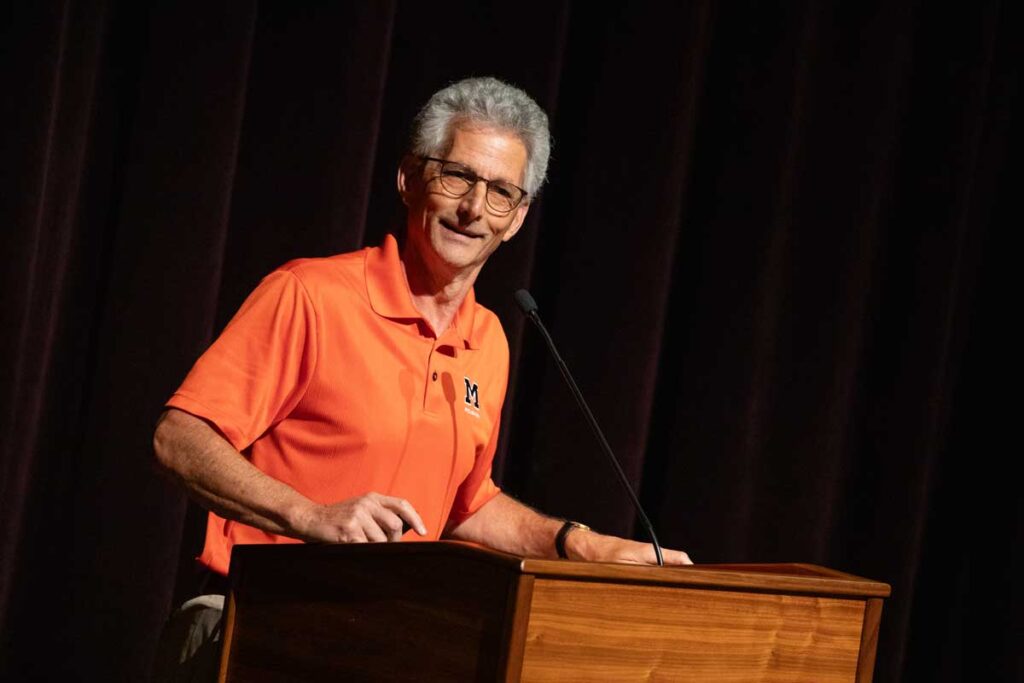 Jeff Selingo, author of College (Un)bound, recently released his latest book, There Is Life After College, a primer for parents of college-aged children. He maintains that today’s teenagers and young adults have many challenges ahead of them after college graduation and that it’s appropriate to start thinking about how to manage your career as soon as you finish high school. Selingo notes that the education system is out of sync with the economy and that college is a platform for lifelong learning that we will leave and return to whenever we need further education and training to get ahead in our existing job or to switch careers.
Jeff Selingo, author of College (Un)bound, recently released his latest book, There Is Life After College, a primer for parents of college-aged children. He maintains that today’s teenagers and young adults have many challenges ahead of them after college graduation and that it’s appropriate to start thinking about how to manage your career as soon as you finish high school. Selingo notes that the education system is out of sync with the economy and that college is a platform for lifelong learning that we will leave and return to whenever we need further education and training to get ahead in our existing job or to switch careers.
“Sprinters”, “Wanderers” and “Stragglers” are terms the author uses to describe the student journey to adulthood and careers. “Sprinters” are those students who pursue their careers immediately upon college graduation. They invest their own human capital in internships and postgraduate experiences to position themselves for the right job as those opportunities are presented.
According to Selingo, “Sprinters” comprise only a third of today’s young adults. Most of them worked in high school and many quickly picked a major in college. They also have little or no student loan debt, which frees them to pick jobs regardless of salary. They’re also unafraid to change jobs frequently in their twenties. For those with high student loan debts, salary becomes the driving decision in choosing a job.
“Wanderers” are those young adults drifting through their mid-twenties without a specific career goal. They may choose to work for a while as a barista at Starbucks or elsewhere while contemplating graduate school to avoid making a career decision. Unfortunately, career instability during this period is critical since most salary increases occur in their first decade of employment. Job shopping is how workers get large pay increases in those first few years out of college. If they are not prepared or credentialed for the right job, they risk becoming a “Straggler.”
“Stragglers” spend most of their twenties seeking a pathway to a career. Most explore career options after high school that do not require or include college. If they end up going to college, most do not finish. There are approximately 12.5 million people in their twenties with some college credits but who have not earned a college degree. Employers don’t want to hire people with some college; they want a degree.
Selingo discusses the situation with several college professors who lament that many students reach their senior year without realizing that they should have developed a relationship with a faculty member to write a reference for them for grad school or a job. Students who are on the party circuit, versus the academic circuit, are likely to end up as Wanderers or Stragglers.
Selingo interviews several employers to see what they’re seeking in college grads. While concluding that not everyone is looking for the same thing in a prospective employee, he states that recent college graduates need to demonstrate that they have acquired the following skills: curiosity, grit, digital awareness, contextual thinking and humility. Selingo adds that most children lose their curiosity because school rewards them for answers, not questions. At the same time, learning after college and for the rest of life is self-directed, requiring each of us to decide what skills or knowledge we’re missing and how to acquire that information. Employers value individuals who demonstrate their desire and hunger to learn.
Another valuable characteristic is grit, the desire to keep going and to succeed even after failure. College athletes are often desirable job candidates because at some point in their careers, they have experienced failure and overcome that failure. Colleges that shelter students from failure or the real world are not doing their job to prepare students for the opportunity to fail and to learn from that failure. Students would be much better off if they were complimented for their persistence and not their intelligence; those who pursue assignments with vigor are those who typically rise to the top.
Selingo writes that it’s becoming clear that the most successful graduates are those who acquire the broad range of skills that employers are seeking when they work outside the classroom, rather than through the normal channels in college. Sometimes, that combination may take them more than four years to complete, but the experience is worth the extra time. He suggests that taking a gap year before college may be worth it in the long run to keep students from wandering between programs without considering their desired career paths.
Selingo shares a narrative about the role that internships now play in a successful career launch for many college graduates, a dramatic shift in job placement over the past 20 years. According to the author, employers today hire 50 percent of former interns as full-time employees. At some companies, the number of interns hired full-time approaches 75 percent. He further writes, “For American education to remain relevant to students, it must abandon the antiquated idea that schools and colleges broadly educate people for life while employers train them for jobs. It’s not either-or anymore.”
In “Redesigning the Bachelor’s Degree,” Selingo addresses a topic that has increasingly surfaced over the past few years as academics and politicians have sparred over the topic of college completion. In this case, he writes that the bachelor’s degree is overdesigned and does not provide enough focus for students on the practical applications of courses and degrees.
Selingo discusses an initiative at Georgetown University to combine a liberal arts degree with a vocational graduate degree, both earned in four years’ time. Project- and competency-based learning and community college programs linked to corporate training programs are other options discussed. Over time, he believes that where a student goes to college will be less important than the learning and experiences they’ve developed and incorporated into their career story.
Jeff Selingo has smoothly transitioned from writing for higher ed insiders to authoring two books oriented toward parents and prospective college students. There is Life After College collects the evidence and presents a compelling narrative that simply providing a number of degrees and courses is not enough for most colleges to succeed in the future. Alternatives abound and several are discussed in the book. The colleges and universities that eliminate the “either-or” attitude about education and job training will be the schools of choice. I highly recommend this book, whether you are a college insider or parent.











